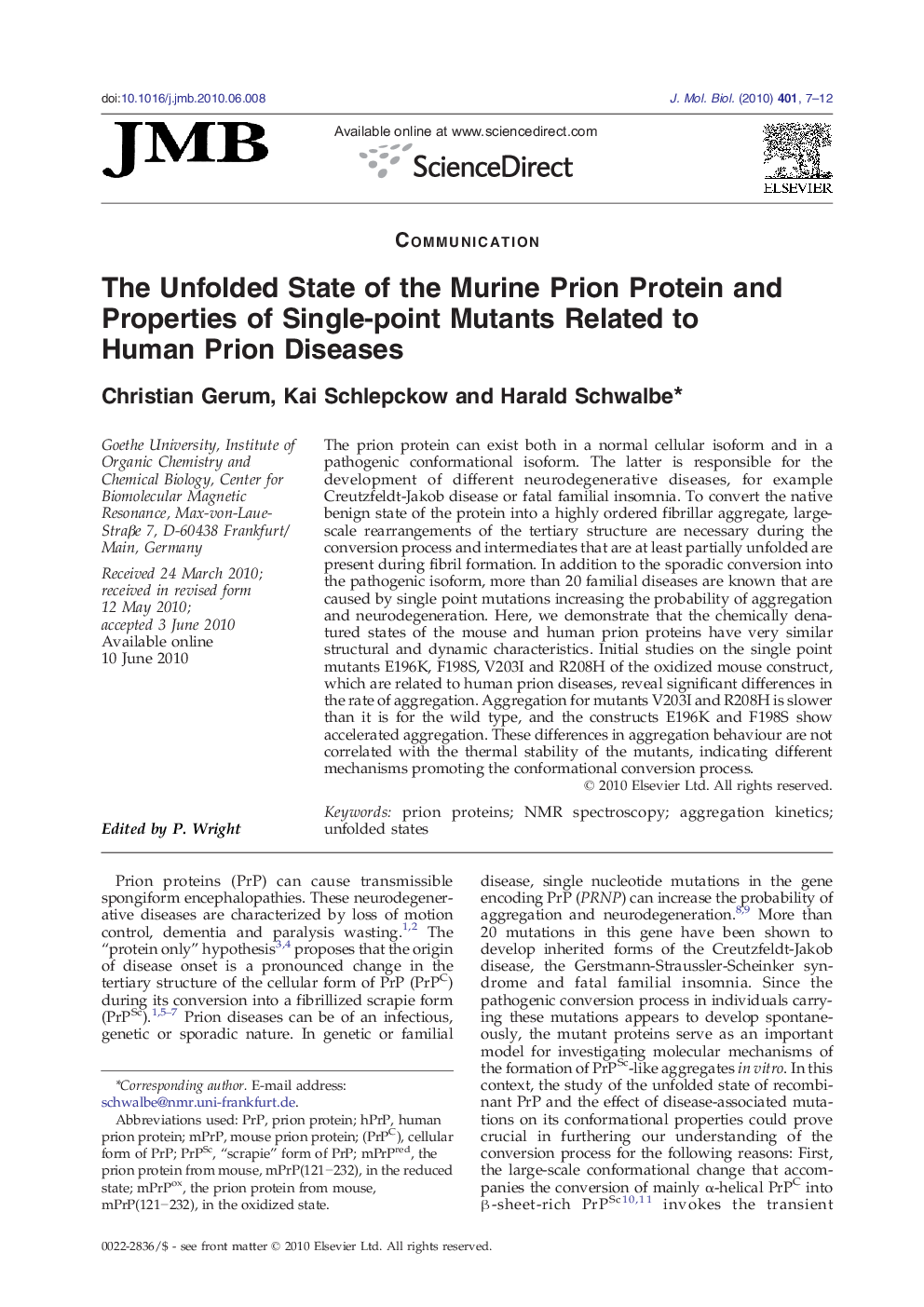| کد مقاله | کد نشریه | سال انتشار | مقاله انگلیسی | نسخه تمام متن |
|---|---|---|---|---|
| 2185661 | 1096000 | 2010 | 6 صفحه PDF | دانلود رایگان |

The prion protein can exist both in a normal cellular isoform and in a pathogenic conformational isoform. The latter is responsible for the development of different neurodegenerative diseases, for example Creutzfeldt-Jakob disease or fatal familial insomnia. To convert the native benign state of the protein into a highly ordered fibrillar aggregate, large-scale rearrangements of the tertiary structure are necessary during the conversion process and intermediates that are at least partially unfolded are present during fibril formation. In addition to the sporadic conversion into the pathogenic isoform, more than 20 familial diseases are known that are caused by single point mutations increasing the probability of aggregation and neurodegeneration. Here, we demonstrate that the chemically denatured states of the mouse and human prion proteins have very similar structural and dynamic characteristics. Initial studies on the single point mutants E196K, F198S, V203I and R208H of the oxidized mouse construct, which are related to human prion diseases, reveal significant differences in the rate of aggregation. Aggregation for mutants V203I and R208H is slower than it is for the wild type, and the constructs E196K and F198S show accelerated aggregation. These differences in aggregation behaviour are not correlated with the thermal stability of the mutants, indicating different mechanisms promoting the conformational conversion process.
Journal: Journal of Molecular Biology - Volume 401, Issue 1, 6 August 2010, Pages 7–12